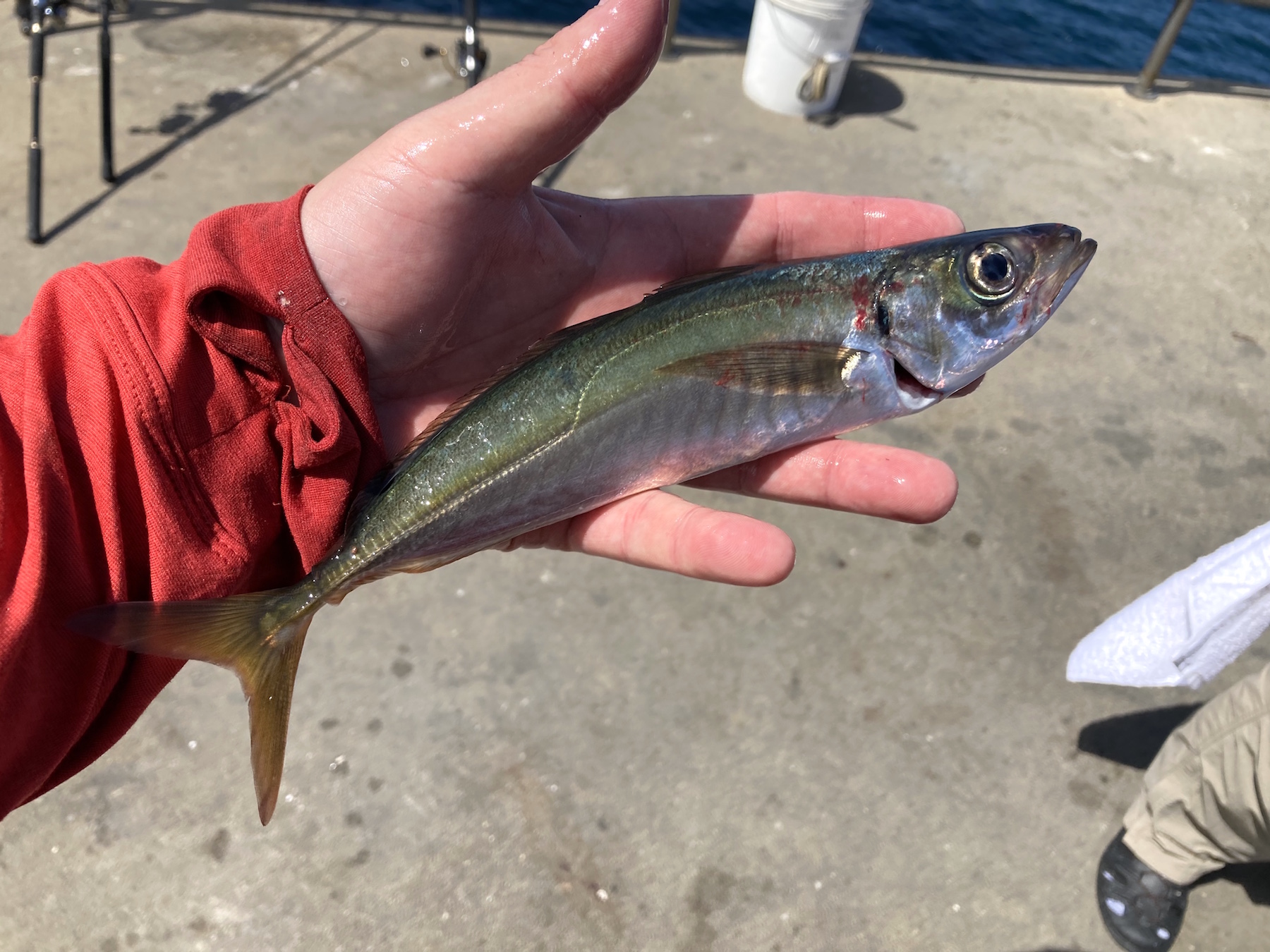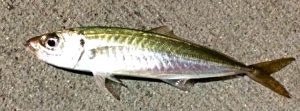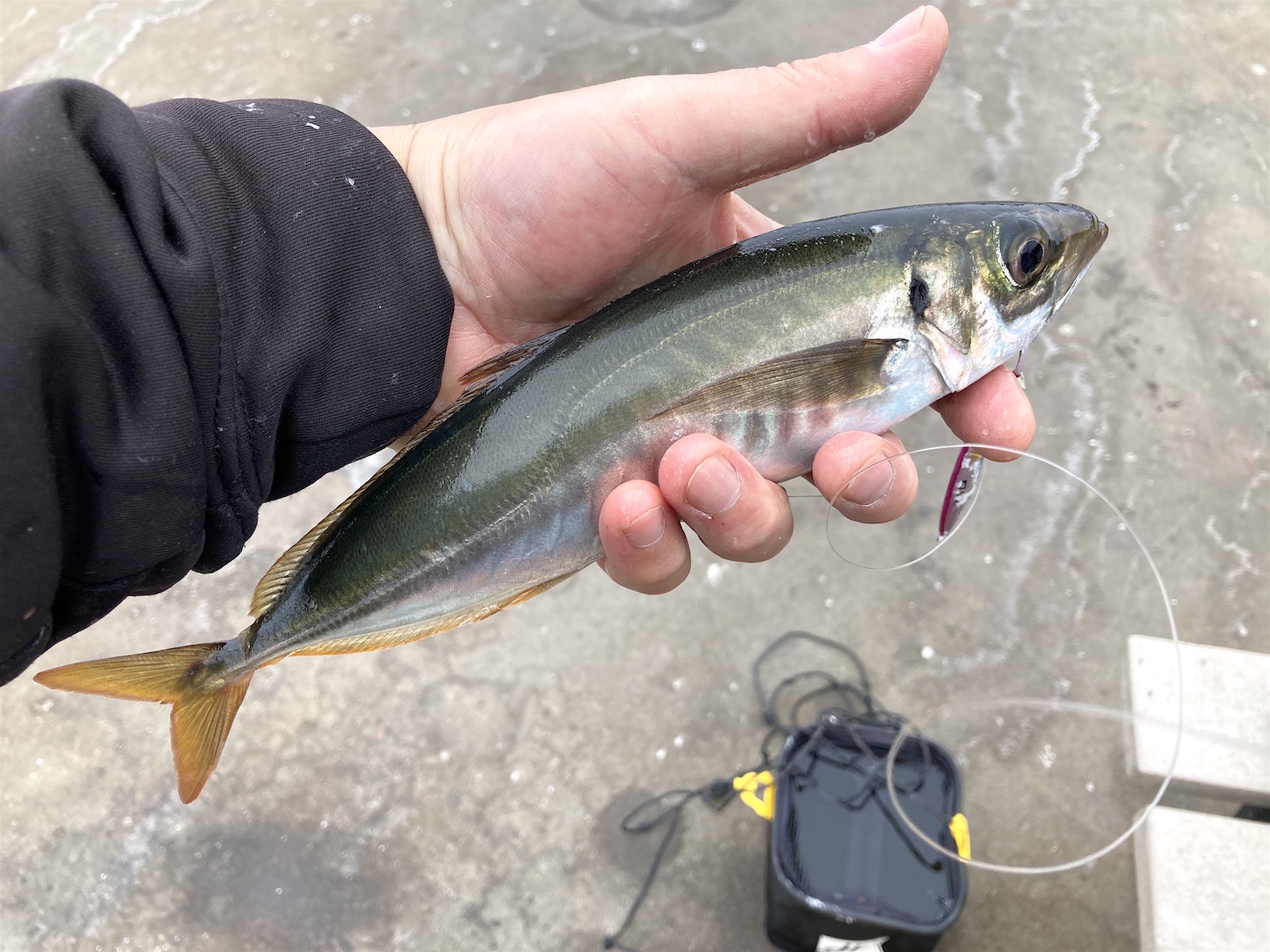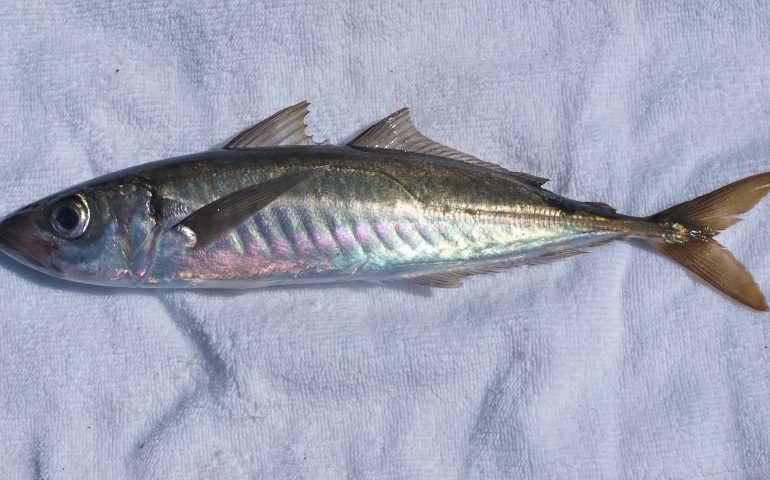Jacks, Amberjacks, and Pompanos: Family Carangidae
Species: Trachurus symmetricus (Ayres, 1855); from the Greek words trachus (rough) and oura (tail), and the Latin word symmetria (symmetrical or regularly shaped). A member of the jack family Carangidae.
Alternate Names: Spanish mackerel, Spaniard, California horse mackerel, mackerel jack, saurel, agii and jackfish. Called horse mackerel and scad by 19th century fishermen. In Mexico called charrito or charitto chicharo.
Identification: Typical jack shape although slim. The second dorsal fin and the anal fin extend almost to the caudal fin. On the side, along the lateral line, there is a ridge extending almost the entire length of the fish. Their coloring is iridescent green above, sometimes with a bluish luster, often mottled with lighter and darker shades; silvery on the belly.

Jack Mackerel caught at the Cabrillo Mole in Avalon by fish-ninja
Size: To 32 inches; most caught off piers are less than 14 inches. The California record fish weighed 5 lb 8 oz and was taken at the Huntington Beach Pier in 1988. The IGFA World Record fish weighed 1 Lb 9 oz and was taken at Farallon de San Ignacio, Mexico in 2022.
Range: Acapulco, Mexico, Gulf of California, and the Pacific coast of Baja California, California north to the Gulf of Alaska, and the Pacific ocean south of the Aleutian Islands. Common along the Pacific coast from southern Baja California, to Vancouver Island, British Columbia.
Habitat: Pelagic in nature, preferring moderately deep water although ranges from the surface and surf zone down to 1,320 feet. Often found in schools with Pacific mackerel and sardines. Primarily feeds on large copepods, euphausids, pteropods, squid and small fish.

Piers: Most common to southern California and the central coast. Best bets: Ocean Beach Pier, Oceanside Pier, San Clemente Pier, Balboa Pier, Newport Pier, Redondo Beach Pier and Hermosa Beach Pier. Some years will see large schools of these fish at the Central Coast piers—Avila, Port San Luis, Monterey Wharf #2, Seacliff State Beach Pier and the Santa Cruz Wharf. I have also had reports of good catches of jack mackerel at the “B” Street Pier in Crescent City, which is just a short distance south of the Oregon border. The fish in Crescent City seem to show up from late August to September and typically are good-sized fish, 22-28 inches long, the kind that are more commonly taken out in deep water by anglers trolling for salmon.
Shoreline: Occasionally taken by shore anglers, primarily in southern California bays.
Boats: An infrequent species from boats.

Jack Mackerel caught at the Cabrillo Mole in Avalon in May 2023 by fish-ninja
Bait and Tackle: Usually caught near the top of the water; often found in mixed schools with Pacific mackerel (and sometimes Pacific sardines). When present, jack mackerel can be caught on a variety of tackle and baits. Light to medium tackle, a size 6 or 4 hook, and a live anchovy (especially small pinhead anchovies), can be deadly. Many are also caught on small lures, every thing from small bonito jigs, to Scampis, to small feathers. Often times bait rigs can also produce a lot of fish: simply tie several shiny size 8 hooks to your line. In central California, Sabiki/Lucky Lura-type bait leaders are the most common rigging. Many times a cast, followed by a slow retrieve, will see the jack mackerel follow the bait nearly to the surface and then strike just before the line leaves the water. Best months are usually July through September.
Food Value: Fair food value, with a strong flavor, small flakes, and a firm texture. It is somewhat oily with a high fat content. The flesh is off white in color and best suited for broiling or baking. The common name was changed from horse mackerel to jack mackerel by the DF&G in 1947 in order to increase the consumer appeal of the fish. In other words, it was done to (hopefully) help the fish canning companies make a little more money. Companies that at the time were seeing sardines disappear along with cans of sardines and profits!
Comments: Small jack mackerel are favorite bait for white seabass and yellowtail. A close relative and very similar looking fish, the amberstripe scad (formerly called Mexican scad, Decapterus muroadsi), is considered uncommon in California but occasionally seen, especially during warm water years. PFIC has had several reports of amberjack scad being caught at Avalon. I have only caught one, at the Cabrillo Mole in Avalon in April 2007. These scad reach 21.7 inches in size and are dark to light green or blue above, silvery below, and with a yellow, orange or reddish stripe on the side. They have a large black spot on the rear edge of the operculum (gill cover).

[…] https://www.pierfishing.com/jack-mackerel/ […]
Squid is also good bait for jacks